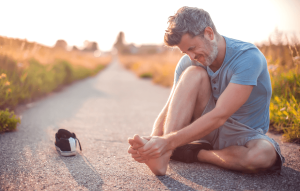
Christopher McDougall’s Born to Run is more than just a book—it’s a game-changer for anyone who’s ever laced up running shoes, especially those who’ve faced injury or struggled with the idea of long-distance running. The book explores the incredible abilities of the Tarahumara tribe, who run ultra-long distances in thin, minimalist sandals without experiencing the injuries that plague so many modern runners. McDougall’s quest to understand how they do this without pain challenges everything we know about running, footwear, and our own physical potential.
As someone who never loved long-distance running until my 30s, Born to Run completely transformed how I viewed my feet, my body, and the sport itself. I used to believe that long distances were something I couldn’t handle, but as I started running ultramarathons and learning more about foot mechanics, I realized how much potential I had been missing. McDougall’s insights on minimalist footwear, running form, and injury prevention resonated deeply with me as an athlete and chiropractor even though I don’t run ultra long distances in barefoot shoes just yet. For my daily walking, I’ve transitioned to barefoot shoes, but when it comes to 50+ mile ultramarathons, I rely on minimalist, zero-drop shoes like Altra Lone Peak with a wide toe box that give me both natural movement and the protection I need.
Key Takeaways from Born to Run
The Power of Natural Running:
McDougall emphasizes that humans were built to run naturally—without the heavy cushioning and support that modern running shoes offer. He promotes the idea of using minimalist shoes to encourage a more natural foot strike, which can help alleviate common injuries like foot and ankle pain.Minimalist Running and Injury Prevention:
One of the main lessons from Born to Run is that modern running shoes often contribute to injuries by encouraging heel striking and poor biomechanics. McDougall shows how the minimalist sandals worn by the Tarahumara allow for proper alignment and natural movement, significantly reducing the likelihood of foot pain, ankle pain, and even knee injuries.Running Form and Biomechanics:
The book provides valuable insights into running form—especially the importance of a midfoot or forefoot strike, short strides, and proper posture. This shift in focus has not only helped me become a stronger runner but also allowed me to recover from running-related injuries more quickly.
Why Read "Born to Run"
If you’ve ever dealt with foot pain, ankle pain, or other running injuries—or even if you just want to become a better, more efficient runner—Born to Run is a must-read. It challenges everything we think we know about running, from how we move to the shoes we wear. For anyone recovering from an auto accident or dealing with neck pain, McDougall’s exploration of biomechanics and natural movement is also incredibly relevant.
As a Chelan chiropractor and ultramarathon runner, I’ve applied many of McDougall’s principles to my own training and recovery. I now walk daily in barefoot shoes and use more protective, minimalist shoes for my ultramarathons, ensuring my feet can move naturally without sacrificing protection. Whether you’re struggling with running pain or simply curious about how to improve your performance, this book is a fantastic resource.
If you’re ready to learn more about how barefoot or minimalist running can help prevent injuries, check out our article on barefoot running and minimalist shoes. Whether you’re aiming to avoid injury or get back into the activities you love, the lessons in Born to Run can make a big difference.
Final Thoughts
Born to Run is not just about running; it’s about rediscovering what the human body is truly capable of when we allow it to move the way it was designed. McDougall’s compelling storytelling and thorough research make it an engaging read for both experienced runners and beginners. Whether you’re a marathoner, ultramarathoner, or someone who simply wants to stay active without pain, this book will inspire you to rethink your approach to running.
If you’re struggling with foot pain, ankle pain, neck pain, or recovering from an auto accident, we’re here to help. At our chiropractic clinic, we use McDougall’s principles of natural movement alongside chiropractic care to help you get back to doing what you love, pain-free.







